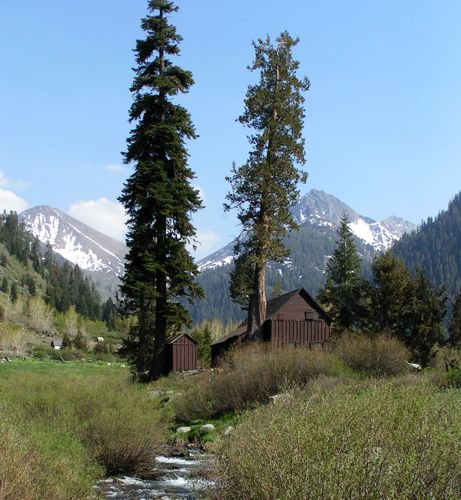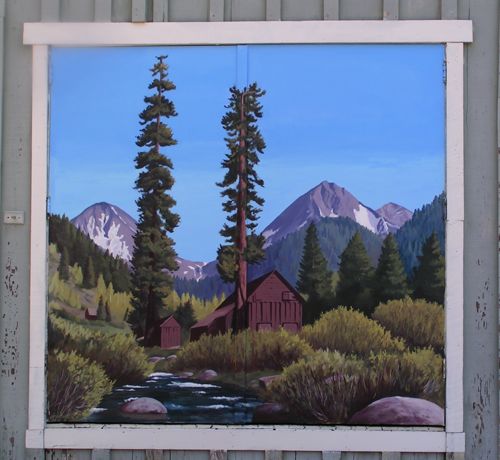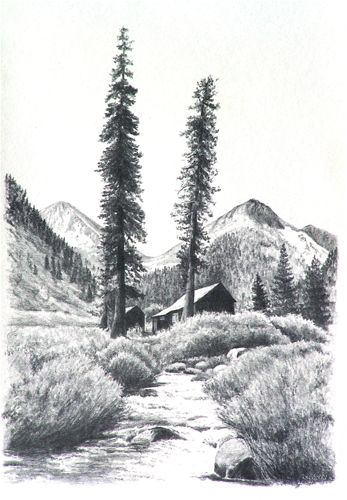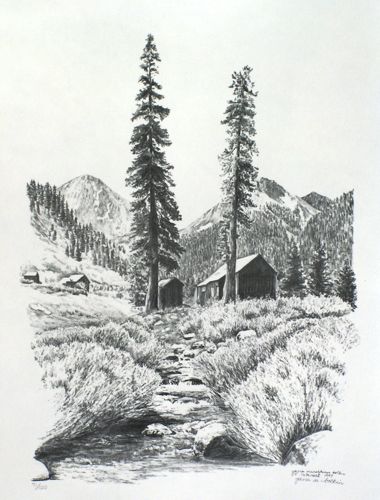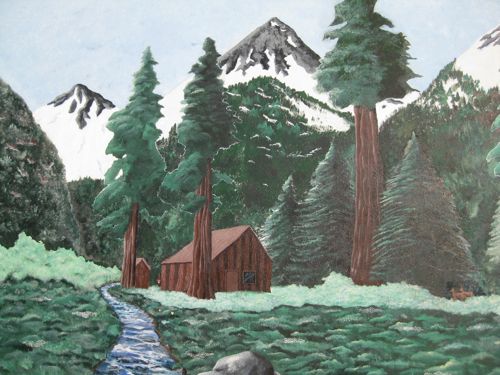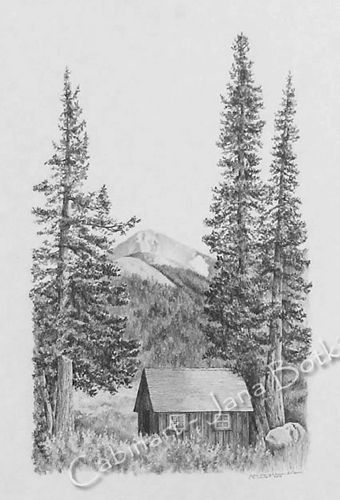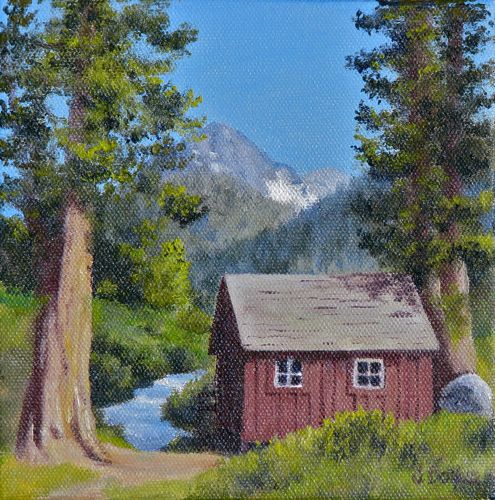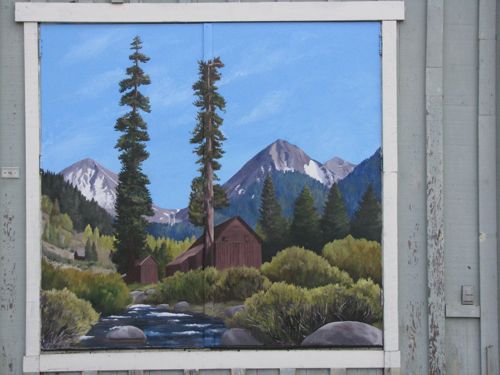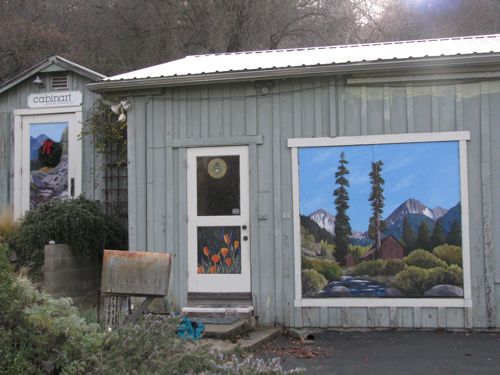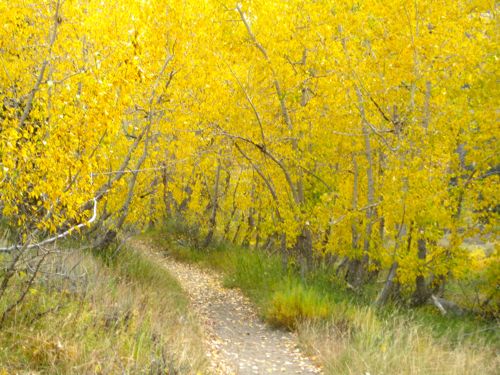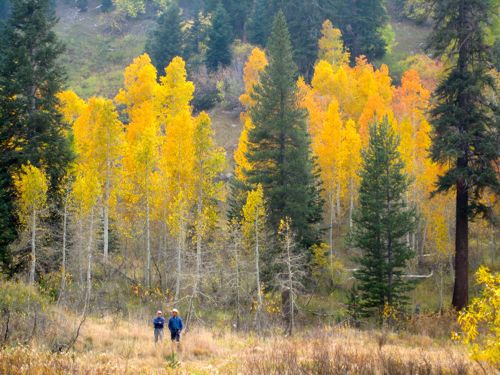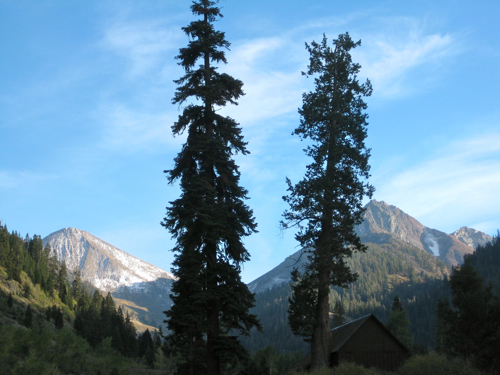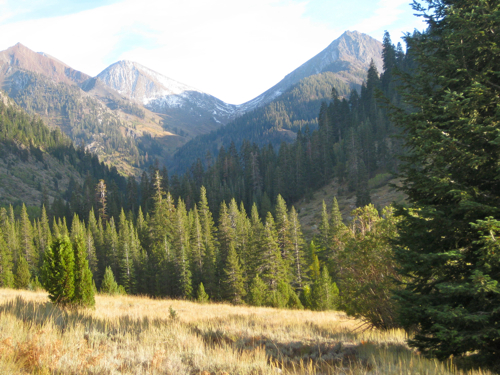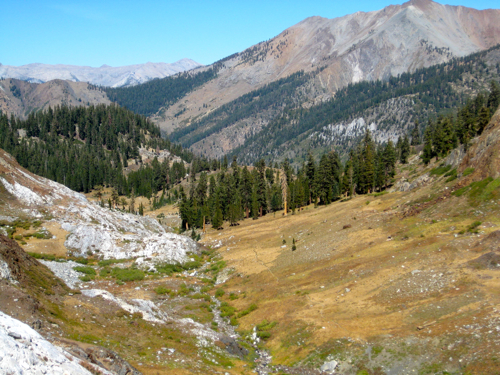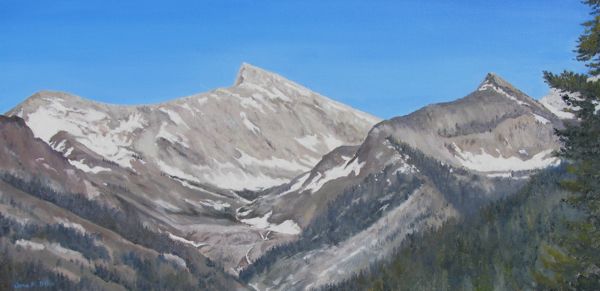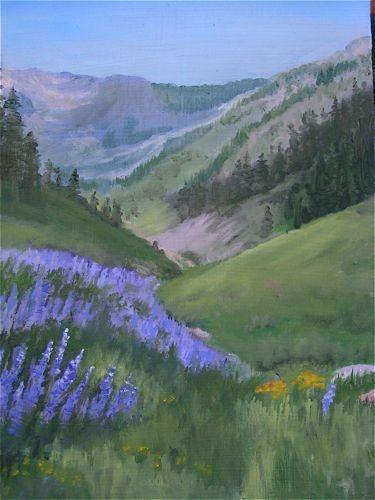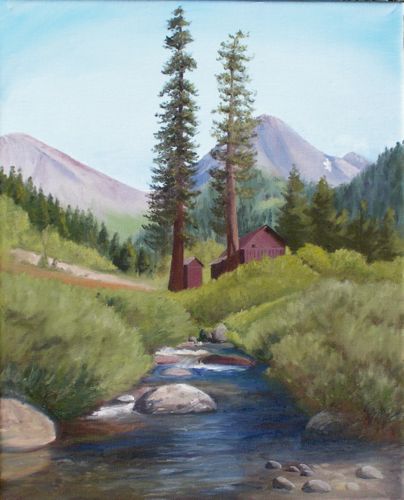After I got over the thrill of drawing what was really in front of my eyes, I began to want to make better pictures. Real life is messy; artists get to clean it up. It takes practice to draw what isn’t really there, to make up a tree that you didn’t see, to show the edge of the porch that was previously hidden, to work from multiple photos taken from slightly different angles. It is almost impossible to work from photos taken at different times of day from different distances and at different angles. This often requires the skill of a mind reader, and I have learned to say no to some of these requests. But to a certain degree, I can create what we prefer was there.
When someone asks me to draw a house and provides a perfect photo, I have been known to ask why they want a drawing when the photo says it all. The answer is usually that pencil is so beautiful. This is a thrill to my little pencil-loving heart!
Here is the main photo of Farewell Gap again:
Here is a painting in which I scooted things ever so slightly to suit myself.
If you are standing on the bridge at the end of the road in Mineral King, you are probably just in awe of the view. Your brain knows there is a stream underfoot, a cabin sort of close, and Farewell Gap in the distance. Not very many people outside of careful photographers ever realize that there is no place to stand where all three line up for a complete photo! So, when I draw or paint this scene now, I make the necessary adjustments. Until this blog posting, I have never admitted such treachery and deception in recordable form!
And here it is in pencil from 2005 when I really started becoming bold about deceiving the world! (yes, I exaggerate to make a point – try not to get all worked up here!)
